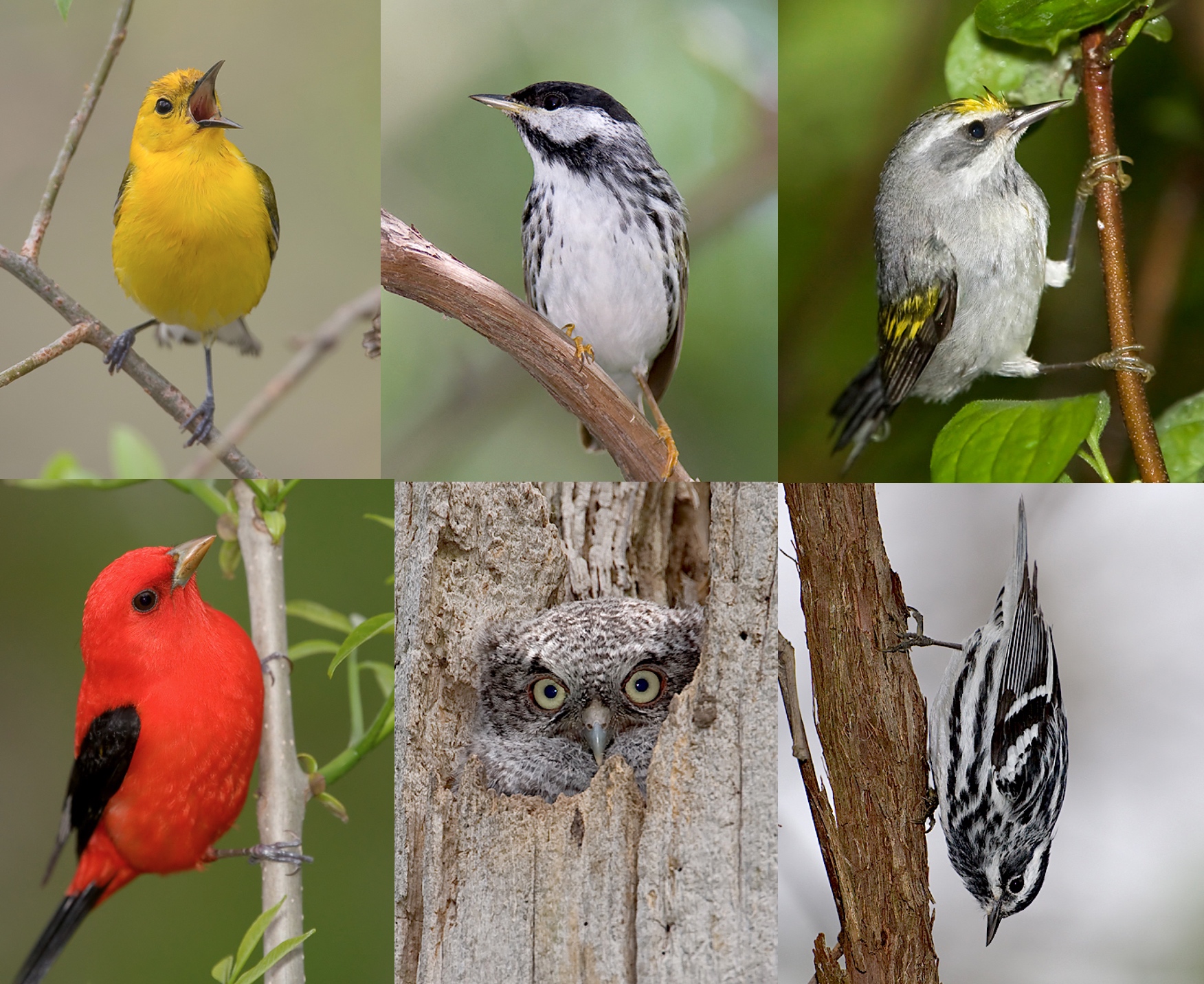

|
||||||||
|
As of April, 2023, Magee Marsh is open and there are no specific COVID restrictions or vaccination requirements in place. For details, please click here to visit the ODNR web site. New for 2021 - free eBook about Magee Marsh - click to download PDF Magee Marsh, situated on the southern shore of Lake Erie, is a prime stopover for North American warblers during spring migration. Every year thousands of birders, photographers, and nature lovers flock to this location in spring to witness the unforgetable spectacle of large songbird concentrations preparing to migrate across the great lake toward their breeding grounds in the north. Many birders make the trip annually. Some have been doing so for twenty five or thirty years. Magee Marsh is just one of those special places that you have to come back to year after year. Here
you'll find all the information you need to plan a
trip to this warbler mecca. We've collected
this information into one convenient place, in hopes
that more people will make the trip to Magee in the
spring to witness the warbler migation. And
more importantly, we hope that more people will come
to see the value of birds as beautiful
co-inhabitants of this small planet we've been
entrusted to care for.
At Magee you'll meet all sorts of
people, from local farmers and Amish folk to
businessmen and college professors, cowboys and
bikers. People come from all over the United
States, and all over the world. Love of birds
and nature transcends all boundaries.
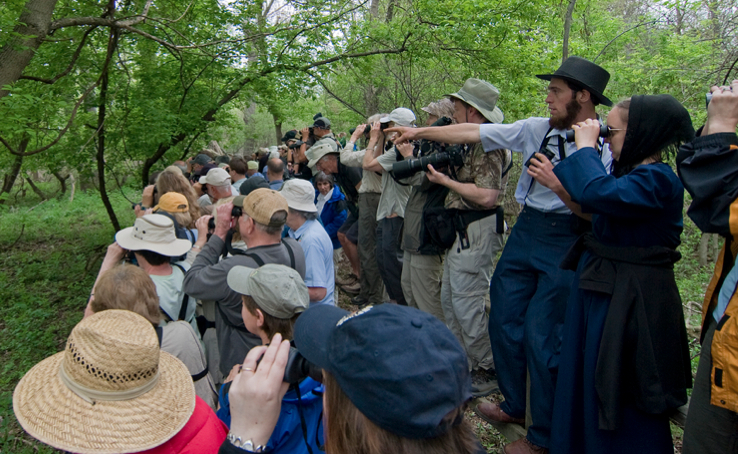 The annual birding festival, which
usually runs for about ten days in early May, draws
thousands of birders and photographers spanning the
entire spectrum from beginners and amateurs to
serious birders and pros. There are bird
banding demonstrations, guided bird walks, book
signings by famous bird watchers, and lots and lots
of cameras taking lots and lots of bird photos.
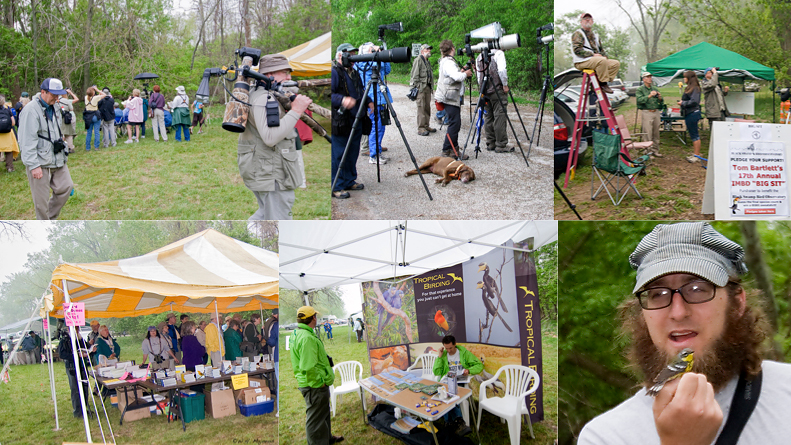 The best
time to visit Magee is in the middle of
May. If you can spare two weeks, the
best span would be the second and third weeks
of May. If you're only able to visit for
a shorter term, an interval centered around
the 14th of May is the best bet for maximizing
the number of warblers that you'll be likely
to see. The graph below shows that the
second and third weeks of May typically
produce the largest number of warblers at
Magee, simply in terms of raw numbers of
birds:
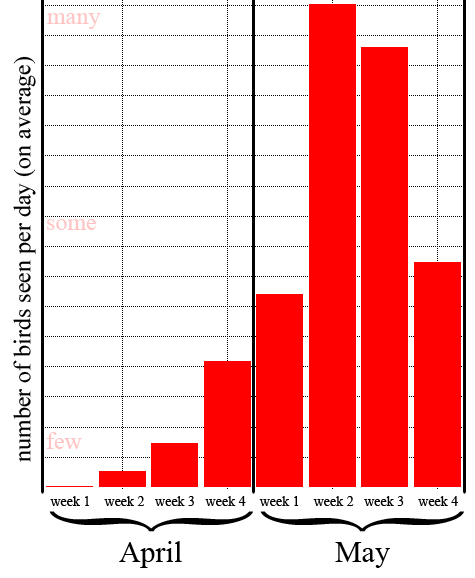 (Based on public domain banding data from USGS BBL/BSBO1) The second and third weeks of May also tend to produce the greatest number of different species - i.e., the greatest species diversity. Keep in mind, however, that there can be enormous day-to-day variations in the number of birds seen at Magee, even during the peak period in May. Thus, you should plan on spending at least four or more days there during the peak period if you want to maximize your chances of being there on a good day. If this seems onerous, just consider that a peak day at Magee can be truly memorable. A really good day at Magee is something that you'll remember for the rest of your life. But you may have to endure a few slow days until the ideal weather pattern forms and a large push of birds comes through. Then you'll be glad you waited! Photos by W.H. Majoros.
Used with permission.
Though not all North American warblers are commonly seen at Magee, during the full month of May you can reaonably expect to see over 30 warbler species (including the vireos). The table below shows which species you're most likely to see during each of the most promising weeks in April and May. As you can see, the second and third weeks of May produce the greatest diversity in warbler species at Magee: 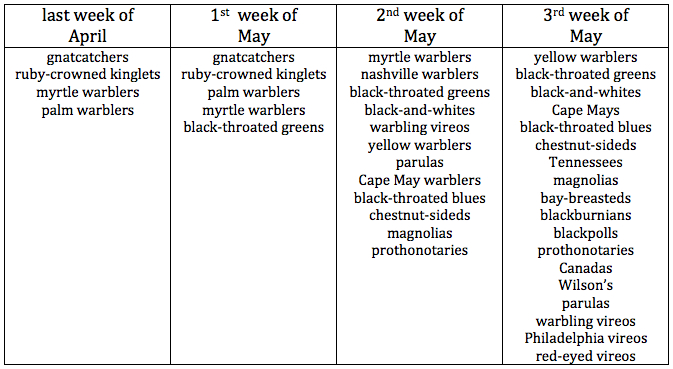 (Based in part on public domain banding data from USGS BBL/BSBO1) Magee Marsh is
conveniently accessible from several major
cities, including Cleveland, Columbus, and
Detroit. Just across the lake from Magee
is another migration focal point: the
well-known Canadian site, Point Pelee.
Day trips and ferries to Point Pelee run
regularly through much of May. The map
below shows the location of the park.
From Toledo it's a simple matter of taking
route 2 east to the well-marked entrance to
the park.
The links in the green bar below will take you to individual pages on this web site, where you can get information on all aspects of birding and bird photography at Magee Marsh. The gallery features high-resolution close-up photos of Magee birds taken by our members. Under "Maps and Trails" you'll find directions to Magee and detailed information on the hottest spots in the park for seeing birds. The section on "Photography Tips" gives in-depth info on using your camera to get the best photos during your trip, and includes links to a free, extensive, online bird photography instructional manual. The "Field Guide" will help you with identifying the birds, and the "Logistics" page will answer your questions regarding where to stay, where to eat, and when to come to Magee. The
endangered Kirtland's warbler often shows up
at Magee in mid-May.
Other good
sources of information, particularly regarding
year-to-year variation in birding conditions
at Magee, are blogs from regular Magee
birders, such as these:(Photo by W.H. Majoros. Used with permission.) Magee
2013
Blog
Magee 2012 Blog Magee: Kirtland's Warbler 2010 Magee 2009 Images A Day at Magee Marsh Photo by W.H. Majoros. Used with
permission.
1"BBL data are in the
public domain" -Bruce Peterjohn, USGS BBL
chief, August 2, 2011, pers. comm.
Data are from the Navarre Marsh Migration
Monitoring Banding Station, Black Swamp
Bird Observatory. Downloaded in
accordance with the Freedom of Information
Act (FOIA) from the United States
Geological Survey's Bird Banding
Laboratory.
|
||||||||
|
